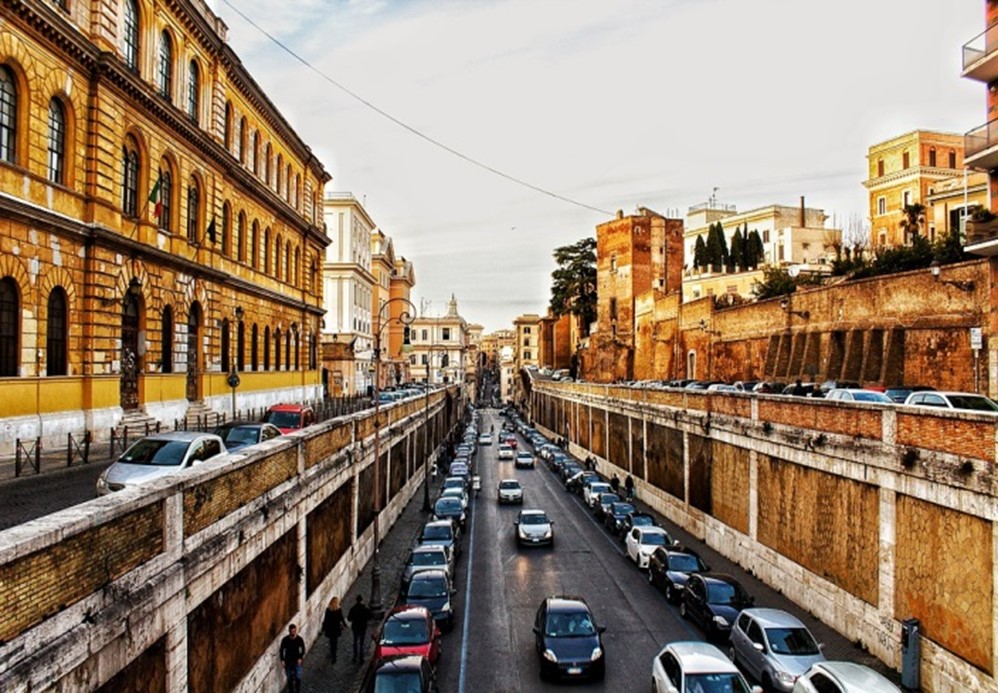CHAPTERS
Navigate to chapter
► Chapter One: Rome Overview
► Chapter Two: Travel Essentials
► Chapter Three: Getting In and Around Rome
► Chapter Four: Hotels and Accommodations
► Chapter Five: Dining in Rome
► Chapter Six: Tourist Spots in Rome
► Chapter Seven: Churches in Rome
► Chapter Eight: Museums in Rome
► Chapter Nine: Nightlife in Rome
► Chapter Ten: Off – Beaten Path in Rome
Chapter Three: Getting In and Around Rome

After learning the different requirements you need before traveling to the Eternal City, the next thing you should know is how to navigate around it. Rome is home to the most brilliant city structure in the world. Its streets are perfectly set up for explorers and curious minds. If you have enough knowledge regarding Rome’s port of entry and transportation services, you will quickly get to your destination with ease. So don’t waste your time, energy and money, they are precious, and they should only be consumed by “City of God.”
Learning how to navigate Rome is the key so that you can have an amazing experience visiting the site of the Roman Empire. In this chapter, you will learn the major transportation systems and port of entries including communication services to help you reach and explore different tourist destinations as well as far-flung places. So grab your map, your smartphone and set out to the first metropolis ever built by mankind!
Traveling to Rome by Plane
This obviously the easiest way to get to the city, you can ride Rome’s national airline called Tarom as well as other major international airlines. Almost all airlines offer non – stop flights from Western cities and Central Europe to Rome’s capital in Bucharest. International airlines such as Delta, KLM Alitalia, and Air France can also take you to straight to Bucharest.
Other flights to key towns in Rome are also being offered non – stop including flights to Arad, Bacau, Cluj, Constanta, Craiova, Oradea, Sibiu, Targu Mures and Timisoara. You can also ride to other European destinations through different European airlines including Blue Air, LOT, RyanAir, Wizz Air, Turkish Airlines, Austrian Airline, Lufthansa, and Tarom.
Traveling to Rome by Train
If you are in a nearby city or in any European countries, you can get to Rome via train. It will take around 4 hours or longer depending on which country or city you’ll be coming from.
If you are coming from Budapest and you wish to go to one of Rome’s key towns like Arad or Oradea, the travel time is approximately 30 hours or around 1 ½ day. The trip from Paris to Bucharest also lasts for more than a day.
Most train ticket allows several stopovers, so if you are travelling to other European cities, it can be a better and more affordable option to explore the continent. First and second – class sleepers are available for overnight trips.
For more info regarding the schedule of international trains to and from Romania, please visit <www.bahn.de> or <www.interrail.eu>
The fares may also vary depending on your chosen destination, please visit the websites above to get more info about the pricing and the available trips.
Traveling around Rome by Buses
You can explore different places and towns in Rome through riding a bus. This can be a better option because it is cheaper compared to taxis.
There are several bus companies that will take you to Romania’s main districts. The Inter – City bus stations are located near train stations. If you want to know the pricing and bus schedules for domestic routes you can visit their website <www.autogari.ro)
Traveling around Rome by Car
If you want to have the luxury of exploring the city at your own pace renting a car might be the best way for you. You can discover Rome’s hidden facets and go to remote areas not reachable by buses and too expensive for taxis. With today’s technology, you can be sure to reach any destination you may want to visit. Make sure that the car has GPS. Having a Waze App or Google Map can always come in handy. If ever you do get lost, you can always ask for directions, the locals can understand and speak English most of the time, and they’ll be happy to help.
Most rental car companies are located in airports and they also have offices in major cities. You can ask your hotel if they also offer a transportation service or if the travelling package you have has one. Rental policies vary from one company to another, so make sure you read their terms and conditions before signing up. The renters should be over 21 years old, must have a valid driver’s license and a credit card.
Traveling around Rome by Train
Rome today followed the footsteps of its predecessors by building a railway network that connects and covers the whole city. Romans love to travel through trains, so if you wanted to talk Romans or Romanians and discover their way of life, then hop on board for a great adventure and travel like a local!
The domestic trains are safe and on time, however it doesn’t run very fast compared to international trains, so if you are running late for some reason, it may not be the best option. However, if you are a tourist you can surely savor Rome’s great scenery and relax while waiting for your destination.
There are different kinds of domestic trains in Rome:
- Regional (R) – this is the local train and it is also the cheapest but the slowest line.
- Inter – Regional Trains (IR) – it is much faster and a bit more expensive than regional trains, it can connect you to other towns from the main station.
- Inter – City Trains (IC) – It is the fastest and most expensive railway line in Rome.
The Inter Regional and Inter – City Trains require a seat reservation and a ticket. They also have sleeping and dining options (first or second – class) for overnight travellers.
Continue Reading…
Want to read the entire thing?

